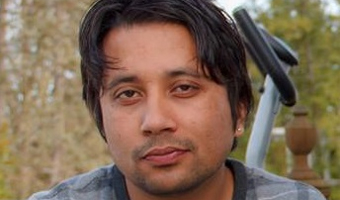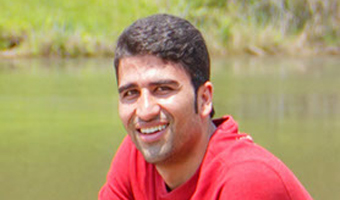Chemistry graduate students Susil Baral and Ali Rafiei Miandashti co-authored an article in the journal Nanoscale with their adviser, Dr. Hugh Richardson, Professor of Chemistry & Biochemistry at Ohio University.

Susil Baral
The article, “Near-field thermal imaging of optically excited gold nanostructures: scaling principles for collective heating with heat dissipation into the surrounding medium,” introduces a new optical temperature and thermal imaging technique combining near-field microscopy and Er3+ photoluminescence thermometry.

Ali Rafiei Miandashti
Abstract: In this paper, we introduce a new optical temperature and thermal imaging technique combining near-field microscopy and Er3+ photoluminescence thermometry. The tip aperture of 120 nm limits the spatial resolution of near-field thermal imaging. We use the technique with two different approaches towards local temperature measurement and thermal imaging. In the first approach, gold nanostructures on top of Al0.94Ga0.06N thin film embedded with Er3+ ions are optically excited through the SNOM tip with 532 nm CW laser to generate thermal images that have a Gaussian thermal profile because heating and probing are done through a single tip aperture. In the second approach, nanostructures on top of thermal sensor film of AlGaN : Er3+ ions deposited on a transparent sapphire substrate are excited with 532 nm CW laser through the substrate with a large spot size (FWHM ∼10 μm) and Er3+ emission from the film is collected in transmission mode through the SNOM tip. We use this approach to measure steady-state thermal profiles from optically excited different sized clusters made from 40 nm gold nanoparticles. This approach yields steady-state thermal profiles that have inverse distance temperature decay away from the cluster and we find that the maximum temperature change and temperature decay length into the surrounding medium (r½) scales with cluster radius.



















Comments